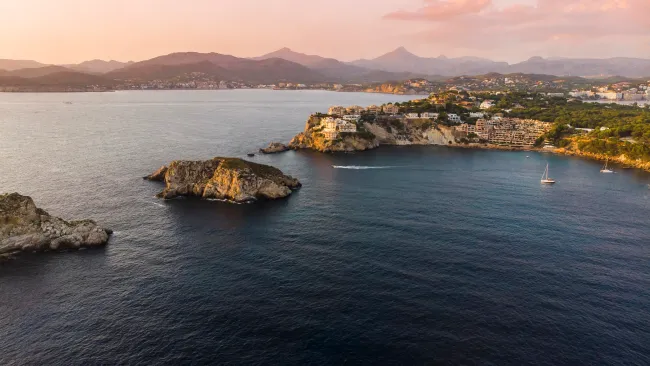Shipping containers that are lost at sea can pose a number of different unseen hazards across oceans and land, a new report from The Associated Press (AP) revealed.
On Thursday, the AP published a report detailing how more than 20,000 shipping containers have been lost at sea in the last decade and a half, spilling their diverse contents into marine ecosystems. The debris has polluted shorelines, harmed fisheries and wildlife habitats and contributed to massive oceanic trash patches. While some items wash ashore, most containers sink to the ocean floor and remain unrecovered.
Cargo ships can lose anywhere from a single container to hundreds in rough waters, though estimates on the annual loss vary. The World Shipping Council, an industry group, estimates that an average of 1,500 containers were lost each year over the 16 years they've tracked, with fewer losses in recent years. However, some experts argue the actual number is much higher, as the council's data doesn't cover the entire industry and there are no penalties for failing to report losses.
"Just because it may seem 'out of sight, out of mind,' doesn't mean there aren't vast environmental consequences," California's Monterey Bay National Marine Sanctuary marine biologist Andrew DeVogelaere said.
This summer, thousands of plastic pellets were swept ashore near Colombo, Sri Lanka, three years after the X-Press Pearl caught fire and sank just miles off the coast. The ship had burned for days before sinking, and debris from the disaster continues to surface along the shoreline. The disaster spilled over 1,400 damaged shipping containers into the ocean, releasing billions of plastic nurdles—small pellets used in manufacturing—along with thousands of tons of toxic chemicals, including nitric acid, lead, methanol and sodium hydroxide, all of which are harmful to marine life.
Speaking to the AP, Hemantha Withanage recalled the stench of burnt chemicals along the beach near his home in Sri Lanka. Volunteers quickly gathered thousands of dead fish, their gills clogged with chemical-tainted plastic, along with nearly 400 dead endangered sea turtles, over 40 dolphins, and six whales, all with plastic blocking their mouths.
"It was like a war zone," Withanage said.
The waterfront was shut down to commercial fishing for three months, leaving 12,000 families who rely on the industry with only a small portion of the $72 million they are owed, according to Withanage, the founder of Sri Lanka's Centre for Environmental Justice.
In February, the cargo ship President Eisenhower lost 24 containers off the coast of central California. Some of the containers, filled with cotton, burst open and became waterlogged. The resulting debris washed up near the Monterey Bay National Marine Sanctuary, a federally protected area.
The ship's captain reported the incident to the U.S. Coast Guard, which coordinated with the National Oceanic and Atmospheric Administration and California State Parks to clear the debris. The waterlogged cotton bales were too heavy to move intact, requiring crews to cut them into smaller pieces, with each bale filling two dump trucks.
Concerns extend beyond environmentalists, as some lost containers can float for days before sinking, posing a serious hazard to all types of vessels, from large commercial ships to small recreational sailboats.
World Sailing, the global governing body for the sport, has documented at least eight cases where crews were forced to abandon their boats after collisions, likely with floating containers. In one instance in 2016, sailor Thomas Ruyant was 42 days into a round-the-world race when his sailboat's hull split after a sudden impact, believed to be with a drifting container.
This article includes reporting from The Associated Press.
Disclaimer: The copyright of this article belongs to the original author. Reposting this article is solely for the purpose of information dissemination and does not constitute any investment advice. If there is any infringement, please contact us immediately. We will make corrections or deletions as necessary. Thank you.



